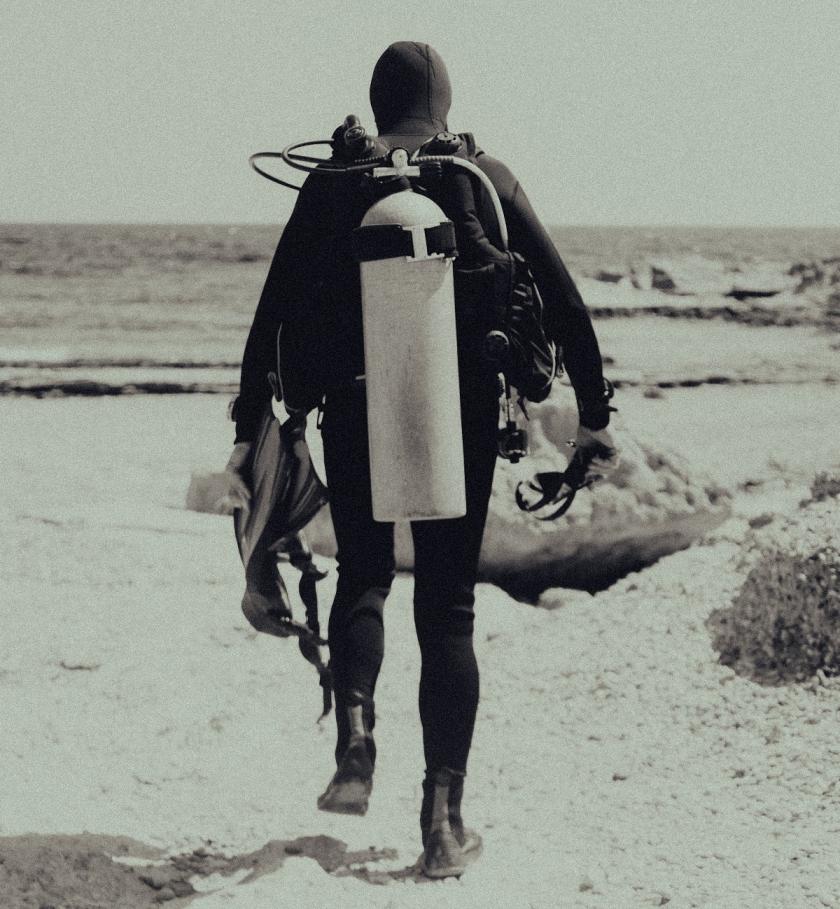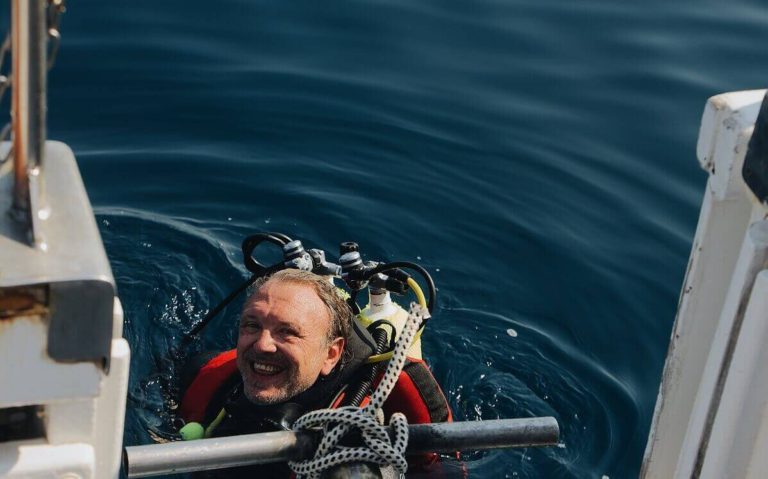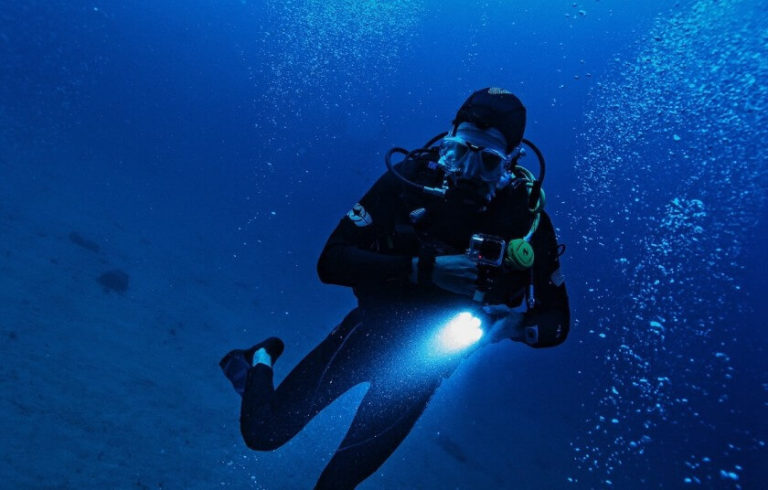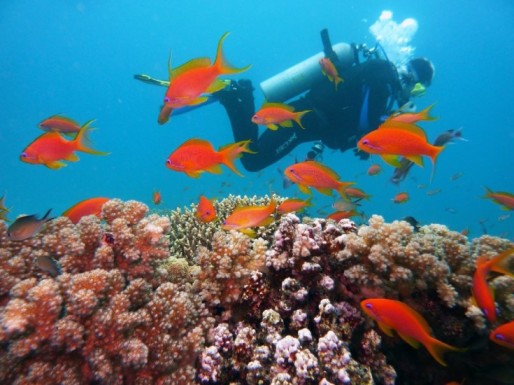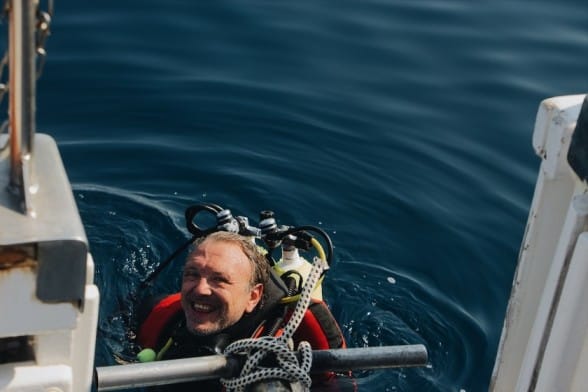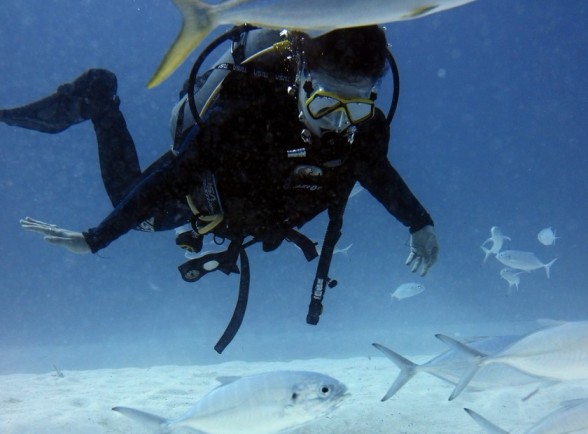Can You Scuba Dive without Fins?
Scuba diving is an underwater activity that greatly depends on using underwater gear and equipments. These include BCDs, masks, wetsuits, and fins among others. If you are familiar with free diving then you know free divers don’t carry any breathing apparatus as seen in scuba diving. Free divers only need a mask and fins. You may wonder if you can you scuba dive without fins?
Yes, you can scuba dive without fins but this doesn’t mean you should do it. Scuba diving fins are designed to help the diver move swiftly and fast underwater. When scuba diving in currents diving fins specifically designed for strong currents, speed and strength help the diver move effortlessly. Diving without fins will naturally slow you down and leave you exhausted and most likely with cramping in your legs from all the kicking.
Scuba diving gear has come a long way and many technological advancements are being implemented in manufacturing. One may wonder why anyone would want to go scuba diving without fins or any other gear for that matter.
For some, it may be out of curiosity or they do not have fins with them or a rental shop nearby but want to go diving.
While you can still scuba dive within a short depth, you won’t enjoy the dive as much as you would have if you had fins.
Today there are fins designed for different diving conditions. All this is done to help ease the kicking stress, conserve energy, enjoy diving and cover a wider area among other reasons.
In the next few minutes, I’ll discuss why you need diving fins, why you shouldn’t go scuba diving without fins, and the different types of fins.
Let’s dive in!
These are different class #mares #justaddwater #diving #scuba #reviews #fins #justsaying pic.twitter.com/VXIIgGfQl7
— Jason Rabbow 🇺🇦 (@jrabbow) September 30, 2013
Why Do Scuba Divers Wear Fins
Scuba divers wear fins for various reasons as listed below;
- For swift movements
- Extra power
- Buoyancy
- Reduce drag
- Avoid leg cramping
- To conserve energy
- For speed
- To protect the feet
In scuba diving, the legs are the most involved body part as divers have to kick to move forward, up, or down. If a diver decides to go diving without fins then they will require a lot of energy to help in pushing their bodies forward.
In addition, scuba diving fins are also manufactured using study material that contributes to buoyancy. Fins have small bubbles of air trapped within the blade material promoting the neutral buoyancy requires in scuba diving.
As mentioned earlier, scuba diving fins manufactured in the modern day have a lot of technology applied. The design can promote speed, and swift movement in strong currents and also help the diver in conserving energy and air consumption.
When a diver is struggling to move then they tend to consume more air compared to a diver using fins for speed.
Fins come in different types open heel and full foot fins. Both types of fins help protect the divers’ feet from injuries and bruises. When using open heel fins, divers wear diving booties or neoprene socks that add an extra layer of protection and insulation.
READ MORE: Can You Scuba Dive without a Wetsuit?
We are looking forward to getting back in the water, how about you? 🤿💦https://t.co/tFMn3urPtY
📸 @beaglebuceos #northerndiver #scubadiving #scuba #diving #lockdown #water #underwater #dive #drysuit #maintenance #kit #mask #fins #ocean pic.twitter.com/9EQ9iNw0sV— @NorthernDiverUK (@NorthernDiverUK) January 13, 2021
Why You Shouldn’t Go Scuba Diving Without Fins
- Scuba diving without fins slows you down. As a diver, you have to deal with the water dragging you behind.
- Diving without fins increases the chances of muscle cramping
- Difficulty in achieving neutral buoyancy. While your BCD and wetsuit help in floating the upper body, the legs will always drag down.
- Scuba diving without fins damages corals and other marine life. As mentioned above, the legs can’t float in water and the diver is forced to anchor the feet onto the ground in order to thrust forward.
- Higher chances of injuries to your feet. As you try moving forward by anchoring the feet into the seabed, you could easily step into sharp corals or other objects such as metal or glass.
- You will get tired very quickly and not enjoy diving
- A lot of energy is used trying to move around which leads to rapid air consumption cutting the dive short.
- In the case of a strong current while scuba diving, a diver without fins is likely to face many challenges.
This short video demonstrates what scuba diving without fins looks like.
Different Types of Scuba Diving Fins
In case you are having trouble picking a pair of fins prompting you to think about scuba diving without them, below is a simple guide to understanding different fins.
Fins can either be an open heel or full foot fins.
Open heel fins

These are most preferred since they come with an adjustable strap. These are perfect for all kinds of feet and most comfortable for many divers making them a popular choice.
Remember to wear scuba diving booties or thick diving socks with your open heel fins for insulation and protection against blisters and injuries.
Open heel fins are also a more popular choice when diving in cold water but there is no harm in using them in tropical waters as well.
Full foot fins
On the other hand, full-footed fins are most popular in tropical waters. Since the divers don’t need to wear booties these work well in warm waters.
Divers with small or narrow feet are most likely to find a pair of full-foot fins that fit perfectly compared to open-heel fins. The shoe pocket has to fit perfectly for efficient diving.
READ MORE: Best Scuba Fins for Small Feet
Another classification category is depending on the size of the blade on the fins. Scuba diving fins can either be long or short.
Short scuba diving fins are ideal when exploring corals. The small blade size allows the diver to make swift turns without hurting the corals.
Long scuba fins on the other hand are better for fast movements underwater. A diver will only require a small amount of kick effort to propel far.
It’s important to note that long scuba diving fins are still shorter than free diving fins. The material used is also different and the two types of fins shouldn’t be used interchangeably.
Using free diving fins for scuba diving, the diver ends up using a lot of energy since the material is very flexible and movement isn’t as swift as you would want it to be.
Fins, Fins and more Fins! We have added fin styles to our repertoire. Come see us if it’s time for you to upgrade! #scuba #diving #fins 🤙 pic.twitter.com/IxfYwD2GfD
— SeaVentures Swim & Scuba – Atlanta, GA (@SeaVenturesATL) October 27, 2021
Types of Scuba Diving Fins
Now let’s look into the types of fins falling under either one or two categories mentioned above.
Paddle Fins
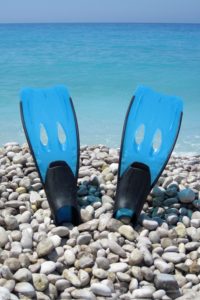
Probably the most proffered scuba diving fins and assist to use. Paddle fins are designed to fit every diver’s needs. These fins require less kick effort for efficient propulsion.
The fins have a single blade manufactured with unique features such as efficiency in speed, and strong currents, for us in cold water among many others. Small details are included in the design of the blade to help the diver achieve easy movements in their specific diving environment.
When shopping for fins, having an understanding of the environments you will be diving in helps you in making the right choice.
For instance, if you need fins for travel or fins for speed then you can easily pick the best from the many options.
Split Fins
These fins are ideal for swift and fast movements while underwater. The blade is split into two as the name suggests meaning there is water passing in between the half blades pushing you forward and fast.
Most beginners have challenges using split fins but with practice, you may end up preferring them over any other type of diving fins.
Flappable Fins
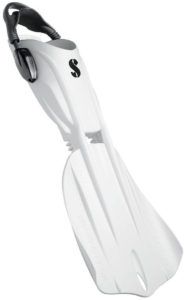
These are the latest type of fins in the scuba diving community in terms of design. Unlike traditional fins that are difficult to walk in, with flappable fins you only have to flip the blade upwards and enjoy walking on the beach.
Trying to walk around in traditional fins such as the paddle fins, you end up fling silly and it’s honestly very difficult walking in them.
If you are diving in a region with rocks on the beach, you may want to leave your fins on as you walk back. These are among the best kinds of fins for travel since it’s easy to pack them.
Force Fins
As the name suggests, these fins give you extra power and very powerful kicks. The fins resemble a fishtail at the blade helping you move fast without using a lot of kick energy. When scuba diving in currents these fins will work to your advantage.
Parting Words
In this article, we’ve looked at whether you can scuba dive without fins. While it is still possible to go scuba diving with no fins I do not recommend it. This only leaves you exhausted from kicking, increases your chances of getting foot injuries and worst destroys corals.
With all the advancements and technology being used in manufacturing scuba diving gear, it’s not worth diving without fins. Take advantage of the manufacturing genius aimed at improving your scuba diving experience.
We’ve also looked into the different types of fins and categories used to classify scuba diving fins. I hope this article answered the question can you scuba dive without fins.

